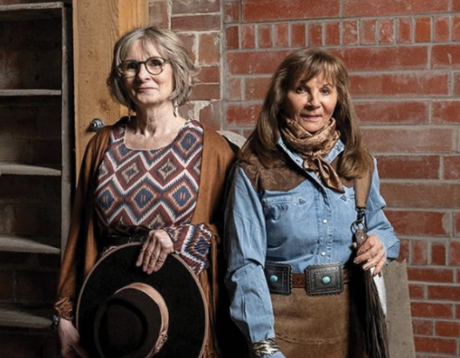
It has become clear to me over the last 40 years of herding cattle, that not all movement is equal. Calm movement, characterized by a relaxed walk with heads level with or below the level of the topline, can make moving a herd very easy and enjoyable. On the other hand, panicked movement, with heads held high and on the run, makes for a very difficult move, and at times, they may not all get moved.
Calm herd movement likes to keep going and usually in the same direction, therefore, constant pushing and redirecting aren’t typically required. When we have control of a herd, we can steer it the direction we want — we can speed it up, slow it down and stop it, when and where we want. This is a herd that we can drive. When we don’t have control of a herd, these aspects of control are absent, and we have a herd that we end up chasing. Chasing and driving are different.
Chasing cattle will not create uniform control — it will be chaotic at best and, quite often, bunch quitters will evade us, cattle will spill through fences or the herd will balk at gates and run back. And when we do get them into a corral, they will be agitated or flat-out wild. Sorting or processing cattle that are very bothered can be a struggle, to say the least. It isn’t that the job can’t be done or won’t get done — it’s that getting it done in a calm, controlled manner is always preferable.
How a herd behaves in a corral has everything to do with the way they were gathered and corralled. One of my mentors was Bud Williams, and it was his opinion that 90 per cent of the troubles one has in corrals are a result of how the cattle are gathered and brought in. When cattle walk into the corral calmly, the job in the corral will be much easier, safer, more efficient and enjoyable.
Historically, getting certain ranch jobs done with our cattle was far from enjoyable. Sorting cattle in corrals or alleys usually peppered the air with a lot of cussing. Getting our cows to go up the chute to the squeeze was accomplished with no shortage of poking, prodding and whacking with old hockey sticks and/or canes. For those of you who grew up working cattle with your parents, I expect that, like me, getting yelled at by your dad while sorting was not an uncommon experience. Over the years my mom went back to the house in tears on more than one occasion before the job was actually done. Travelling around the country presenting livestock-handling clinics to ranch families for over 20 years now, I can tell you that outbursts of yelling are common.
The foundation for getting control of a herd, or what I call driving, is getting the right start. Cattle that are very nervous to begin with may end up spooking and running off regardless. However, if they do, don’t chase after them and try to control them — stop for a bit. You can’t chase or force a good start. All you can do is ask for it. With yearlings that spook off, if you just sit tight for a bit instead of going after them, their curiosity will quite often bring them back, and you can ask them to go again.
When their curiosity doesn’t bring them back, just follow them at a walk until they come to a stop on their own. I keep asking cattle to leave until they will turn and walk away without their heads stuck up in the air — even if it means asking a number of times before you get the departure you want. The thing I have experienced with this process over the years is that when you take the time to get them to walk away today and you can get out to the side and walk with them, they will then be set up for a good start the next time you move them.

There are a number of ways we can exert pressure on cattle to get them to move. Noise is a common approach — whistling, hissing or using your voice. However, noise in itself doesn’t communicate specifically what we want. It’s just noise, similar to raising one’s voice when speaking to someone who doesn’t speak our language. For this reason, noise is an ineffective strategy. With nervous cattle, it can even prove counterproductive by making the cattle more nervous.
Calling cattle is different in that it isn’t intended to scare them, and if calling is rewarded with new pasture or a palatable feed, it doesn’t take long to train them to being called. Calling cattle can be effective in some circumstances, but it should not be confused with control. This is proven when the circumstance arises where the reward being offered isn’t enough to entice them into, through or over something that they aren’t comfortable with, such as pavement with paint, bridges, railroad tracks, a creek or simply an unfamiliar gate. Then we resort to what we were trying to avoid by calling them, which is getting behind them to push them, wave our arms and start making noise, and everything starts to fall apart. This is the same as leading with feed — there are times when it works, but there are also times when it can make your job a lot more difficult.
Moving cow-calf pairs with a bale deck truck or a bale processor in the fall is a prime example. The cows know the routine and come running immediately, but the calves don’t have a clue and, from the get-go, you have everyone unpaired, calves straggling behind, and then you go to push on them at the back, and they get nervous and want to run back to where they were with Mom last and the wreck is on. It doesn’t take the cows long before they figure out they aren’t actually going to get fed, and then they remember they have a calf and they start running back for their calves. So calling and leading with feed is fine in some circumstances, but not in all, and it is not equivalent to a herd that is trained to drive.
The most effective way to exert pressure on cattle is by getting close enough to them that you get into their personal space and they decide to move away. Asking for forward movement is much more effective when you pressure into the side of an animal or a herd, even when you are actually still behind them, as opposed to our natural impulse of pushing directly from the rear into the tail. A back-and-forth sweeping pattern, like good herding dogs do, is much more effective than pushing on an animal or a herd as if it were a wheelbarrow.
Pushing directly into the backend of a herd will hollow out the back and flare the flanks, spreading the herd out. When this tailgating is sustained, it will cause the herd to slow down as well, and/or change their direction. The effectiveness of either pressuring into the side or using a sweeping motion across the back of the herd right past the flanks is that you don’t get stuck in behind in the blind spot. Out to the side is where the cattle can see you, and the chances of them hooking around to keep an eye on you is greatly reduced. Cattle that are at all nervous want to keep an eye on you, and if you want them to go straight, you need to be out to the side far enough that they can see you without having to turn.
Pushing or tailgating is one of those impulses that seems natural when it comes to moving cattle, but it can quite often cause the cattle to do things we don’t actually want them to do. We can create a lot of extra work for ourselves if we are not aware of the full impact of our actions on the movement and/or direction of the herd. In the next article, I will discuss effective ways to control direction and speed and will touch on some other things we like to do but should actually avoid when herding cattle.















